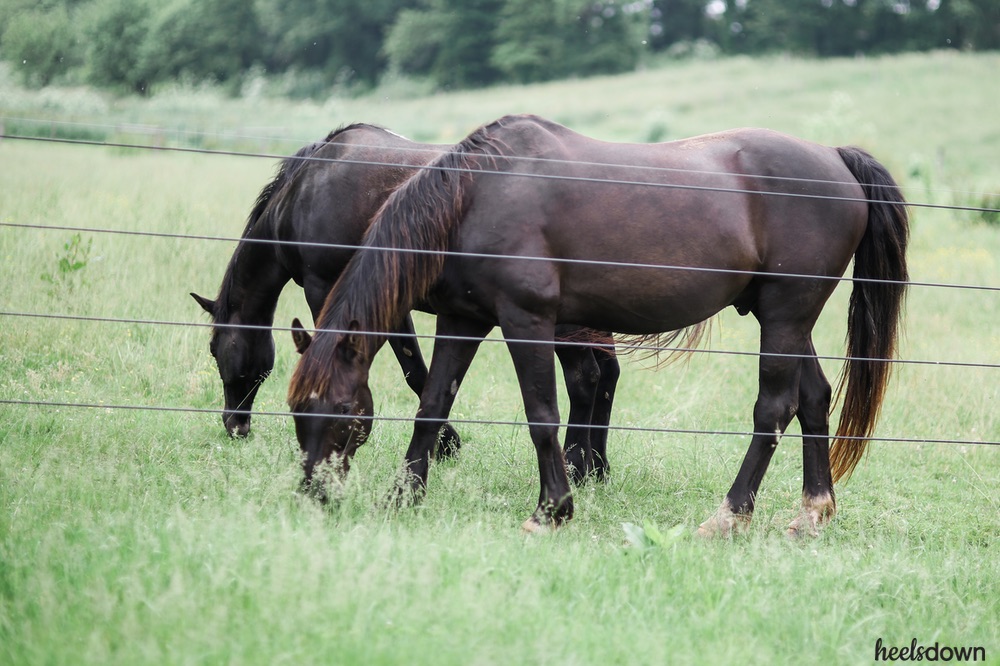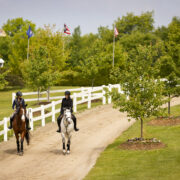Where Does Your Horse Fall On The Totem Pole?

By Abriana Johnson
Horses are herd animals and naturally develop a hierarchy, whether it be a herd of Mustangs crossing the plains or a herd of pasture mates at a show barn.
Have you ever heard someone refer to their horse’s position on the totem pole? “Oh, Finn is the most submissive, he’s low on the totem pole.” Let’s figure out why this idiom is misleading.
Totem poles originated from the native people of the Pacific Northwest. The poles were erected to tell stories, commemorate events and remember important figures. Totem poles were built by skilled craftsmen (and more recently women) who carved faces, landscapes, animals and mystical creatures into large malleable pieces of wood.
In today’s culture, we tend to imagine totem poles akin to pyramids where the top is the most important, the coveted position. In the culture of Native peoples, totem poles are actually built with the most influential section on the bottom. The top often housed mythical or abstract creatures representing tribes, traditions and legends.
The bottom of the totem pole is where the most detail is consumed. It is closer to the audience and can be understood more clearly. The most skilled craftsmen worked on the bottom of the totem pole to successfully share the story or meaning behind the large structure.
Totem poles do not have a social hierarchy. They are symbolic representations of a culture of storytelling.
It’s important to note the “low on the totem pole” idiom is offensive to many Native people and cultures, so referencing horse herd hierarchy would be much more accurate.
When your barn mate asks where your horse is on the idiomatic “totem pole”, ensure them that Finn is indeed at the bottom of his herd hierarchy, not the totem pole… and give him extra treats to make up for it.


